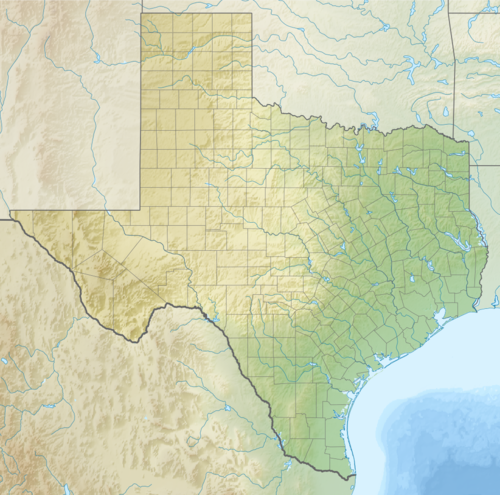
Earthquakes intense enough to be perceptible occur annually in the U.S. state of Texas. Most earthquakes in the state have been small or have produced minimal impacts. No earthquake-related fatalities have been reported in the state, though one earthquake in Texas caused a death in the neighboring Mexican state of Chihuahua in 1923. The earliest recorded earthquake in Texas occurred near Seguin and New Braunfels on February 13, 1847. [1] Information on the intensities of early Texas earthquakes mainly arose from reports of personal experiences; more seismograph stations were installed in Texas after around 1970. [2] In the 20th century, over 100 earthquakes strong enough to be felt occurred in the state, with epicenters in 40 Texas counties. [3] : 37 While many earthquakes in Texas have natural origins, many have been induced from the waste disposal of petroleum extraction, previously believed to be the byproduct of hydraulic fracturing, beginning with the Texas oil boom of the early 20th century. The average number of earthquakes per year with magnitudes greater than 3 increased from roughly 2 to 12 between 2008 and 2016. [2]
The regions within the state with the greatest seismic hazard include West Texas, the Texas Panhandle, North Texas, and South Central Texas. Among these areas, West Texas experiences the strongest and most frequent earthquakes, with El Paso featuring the greatest risk from earthquakes among sizable urban areas in Texas. [3] : 18–19 There are several geologic features in West Texas of interest to seismology, including the Central Basin Platform, the Hueco Bolson, and the Marathon Uplift. [3] : 20–23 Several faultlines are also located in West Texas. The strongest and most destructive earthquake in state history was the 1931 Valentine earthquake, [3] : 20 which had an estimated magnitude of mb 5.6–6.4. [4] : 1171 The second strongest earthquake in Texas history also occurred in West Texas, registering as a magnitude 5.7 tremor near Alpine in 1995. [1]
The Texas Panhandle exhibits the second highest seismic risk among regions in the state. The earthquakes in this area primarily occur on buried faults between the Amarillo Uplift and the Anadarko Basin. [3] : 24 An earthquake with a magnitude of 5.5–6.0 is expected to occur every 50–100 years in the Texas Panhandle, while an earthquake with a magnitude greater than 6.0 is expected to occur every 300 years. [5] The strongest earthquake in this region was a magnitude 4.9 earthquake that occurred in 1925. [5] [6] Some of the seismic activity in the Texas Panhandle may be caused or influenced by the extraction of petroleum. [3] : 27 [5] The northern and northeastern parts of Texas, including the Dallas–Fort Worth metroplex, are another region of seismic risk. Though the area does experience some minor earthquakes, including induced earthquakes naturally occurring tremors potentially along buried faults, shaking from distant earthquakes presents the primary seismic hazard for the region. [3] : 29–31 Some earthquakes of mostly minor strength also occur in South Central Texas and the Texas Coastal Plain. Some of these earthquakes may be associated with geological features produced by the Ouachita orogeny, and many have been attributed to petroleum production. [3] : 32–34
